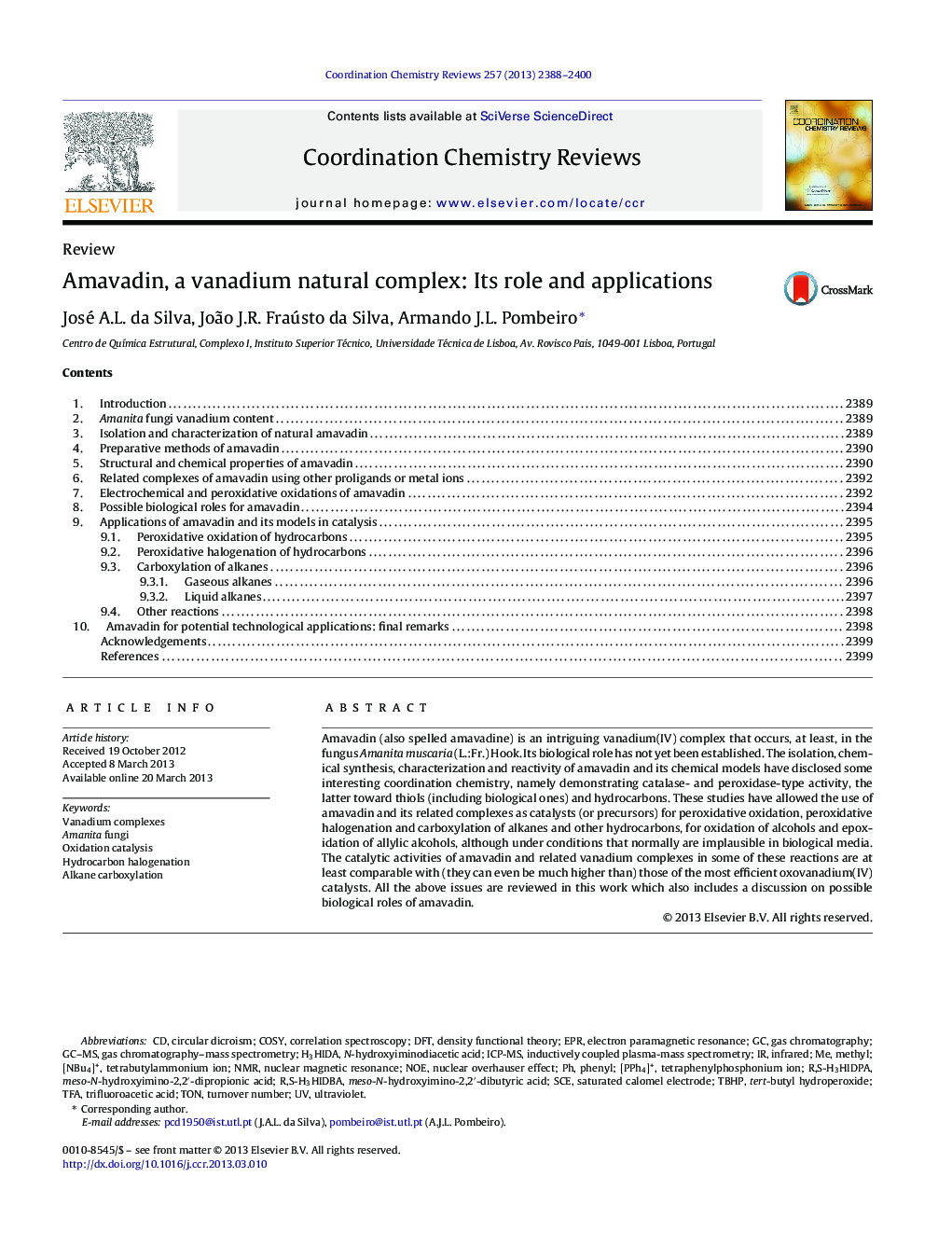| Article ID | Journal | Published Year | Pages | File Type |
|---|---|---|---|---|
| 1299600 | Coordination Chemistry Reviews | 2013 | 13 Pages |
•Amavadin in nature and its chemical synthesis.•Amavadin as a catalyst precursor for mild functionalization of alkanes.•Amavadin as an effective catalyst for carboxylation of alkanes.•Amavadin in oxidation catalysis of hydrocarbons.•Possible biological role of amavadin.
Amavadin (also spelled amavadine) is an intriguing vanadium(IV) complex that occurs, at least, in the fungus Amanita muscaria (L.:Fr.) Hook. Its biological role has not yet been established. The isolation, chemical synthesis, characterization and reactivity of amavadin and its chemical models have disclosed some interesting coordination chemistry, namely demonstrating catalase- and peroxidase-type activity, the latter toward thiols (including biological ones) and hydrocarbons. These studies have allowed the use of amavadin and its related complexes as catalysts (or precursors) for peroxidative oxidation, peroxidative halogenation and carboxylation of alkanes and other hydrocarbons, for oxidation of alcohols and epoxidation of allylic alcohols, although under conditions that normally are implausible in biological media. The catalytic activities of amavadin and related vanadium complexes in some of these reactions are at least comparable with (they can even be much higher than) those of the most efficient oxovanadium(IV) catalysts. All the above issues are reviewed in this work which also includes a discussion on possible biological roles of amavadin.
